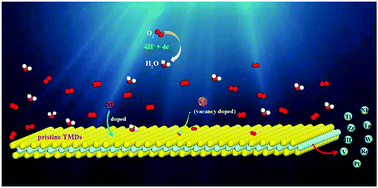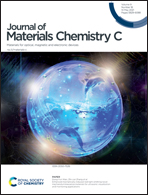Activating transition metal dichalcogenide monolayers as efficient electrocatalysts for the oxygen reduction reaction via single atom doping†
Abstract
Recent studies on 2D transition-metal-dichalcogenides (TMDs) for electrocatalytic applications have mainly concentrated on MoS2, while the catalytic properties of the majority of other TMDs remain undiscovered. This work reveals the activity of sulfur-based IVB–BVII TMDs in different phase structures for the oxygen reduction reaction (ORR). The pristine TMDs are inactive for the ORR. Adatom doping with transition metals and non-metal substitutional doping are efficient strategies to modify TMDs. Particularly, Ni or Co doped 1T-TiS2, 2H-TiS2, 1T-ZrS2, 1T-TaS2, 1T-NbS2 and 2H-TaS2 act as feasible ORR electrocatalysts with overpotential (0.32–0.55 V) comparable to that of state-of-the-art Pt-based electrocatalysts. However, 2H-WS2, 2H-TaS2, 2H-TiS2 and 1T′-WS2 can be effectively activated by N doping with an overpotential of 0.3–0.75 V. Our predictions show an effective way to modify the ORR activity of TMDs by single atom doping, which would be helpful to provoke future experimental interest of the ORR in these systems.



 Please wait while we load your content...
Please wait while we load your content...